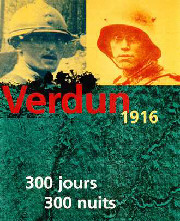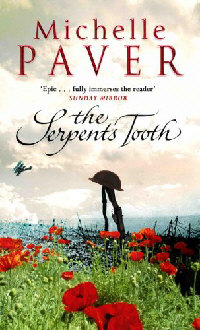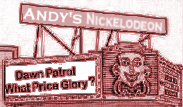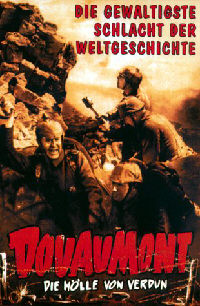
February 2006 |
Access Archives |
TRENCH REPORT: We have received many inquiries from you about the Great War Society's seminar plans for 2006. Contrary to earlier versions of this issue, I still am holding out hopes that we can get the seminar planning process back on track. I've agreed to do everything I can to accomplsh this. . .After last month's mention of the building traffic for the Trip-Wire, I was asked if this was our most popular internet feature. At best, it's only #2. Undoubtedly our busiest single page is our 1914-1918 Super Search Engine (link) which encompasses all Great War Society, WFA-USA and Trenches on the Web material, as well almost 1,000 other WWI sites linked to those pages. In November 2004 there were over 57,000 unique visitors searching for information. You might want to include this valuable page on your bookmarks or favorites list. . .Battlefield pathfinders Frank Jordan and Tom Gudmestad have just announced their latest trip to the Western Front for June 11-21, 2006. This year's expedition visits both WWI & WWII sites. Contact Frank for a brochure. (email). MH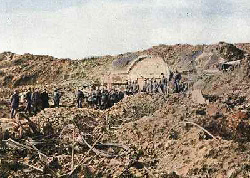
Ruins of Fort Souville
|
||||||||||||||||||||||||

| Special Feature Verdun's Forts Key to the Battle |
- Forts of Verdun - Survey
-
Position of Forts Around Verdun
- Explosion at Fort Douaumont
- Fall of Fort Vaux
- Then and Now Photos of Fort Souville
- Recapturing Douaumont
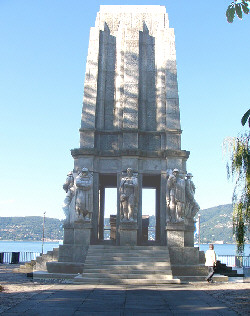
Mausoleum for Italian
Supreme Commander Luigi Cardona
Lake Maggiore
Joyeux Noel the highly regarded French treatment of the legendary Christmas Truce is slated for US theatrical release March 3rd. Check your local listings. . .There is an interesting article, "John J. Pershing and Relief for Cause in the American Expeditionary Forces, 1917-1918" by Timothy K. Nenninger in the spring 2005 issue of Army History. . .Doughboy veteran Harold Ross's old rag, The New Yorker, had an excellent article recently on "Battle Lessons" posted on the websites of Iraq War GIs. A number of them sound like they might have been learned before in the AEF (link).
New at the Websites of the Great War Society and Our FriendsClick on Title to Access |
| At Great War Society Sites At the WFA-USA |

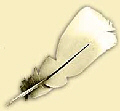 |

An Extreme Abridgement of Eliot
I think we are in rats' alley
Where the dead men lost their bones.
When Lil's husband got demobbed, I said - I didn't mince my words, I said to her myself, HURRY UP PLEASE IT'S TIME
Think of poor Albert,
He's been in the army for four years, he wants a good time, And if you don't give it him, there's others will, I said. Oh is there, she said. Something o' that, I said.
But at my back in a cold blast I hear
The rattle of the bones, and chuckle spread from ear to ear. A rat crept softly through the vegetation
Dragging its slimy belly on the bank
White bodies naked on the low damp ground
To Carthage then I came
Burning burning burning burning
And bones cast in a little low dry garret, Rattled by the rat's foot only, year to year.
He who was living is now dead
We who were living are now dying
With a little patience
Murmur of maternal lamentation
Who are those hooded hordes swarming Over endless plains, stumbling in cracked earth Ringed by the flat horizon only
Falling towers
Jerusalem Athens Alexandria
Vienna London
Unreal
By this, and this only, we have existed
Which is not to be found in our obituaries
London Bridge is falling down falling down falling down
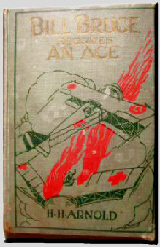 |
Recognize the Author?In the 1920s aviation pioneer Hap Arnold wrote six books to build enthusiasm for flying among the young. |
GREAT WAR 2006 EVENT CALENDAR | |
|
Churchillian Society At the Pacific Union Club, San Francisco February 4 (email) | |
|
Comprehensive Double Calendar Scheduled Throughout 2006 (link) | |
|
Bay Street Armoury, Officer's Mess At Victoria BC March 10-12 (link) | |
|
Baltimore, MD April 1 (email) | |
|
Popular Culture Newcastle Inst. for the Arts & Social Sciences March 31 - Apr. 2 (link) | |
|
Aurora, Colorado May 19-21 (link) | |
|
Hilton Garden Inn, Tampa North August 16 (link) | |
|
Email Response |
|
|

My heart bled when I saw our young twenty-year-old men going under fire at Verdun. . .I loved the confident glance with which they saluted me. But the discouragement with which they returned! Their eyes stared into space as if transfixed by a vision of terror. In their gait and their attitudes they betrayed utter exhaustion.
Petain,
Recalling 1916
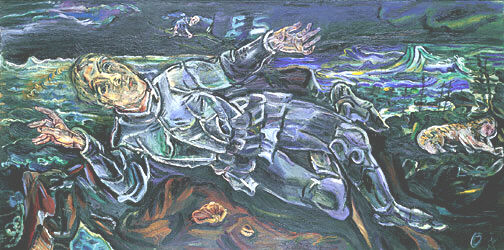
Knight Errant
By World War I Veteran Oscar Kokoschka

|
John Galsworthy and Reveille |
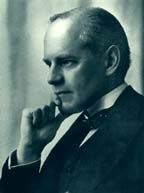 Galsworthy |
Granted complete editorial liberty (or so he believed) and generous funding by the ministry, Galsworthy was determined that Reveille would be no mere mouthpiece to disseminate reassuring platitudes. In addition to soliciting articles by experts on disability, he enlisted an extraordinary array of artistic talent and transformed the publication of an obscure technical journal on military orthopedics and disability pensions into a minor literary event. Galsworthy's passionate introductory editorial is perhaps the journal's most remarkable document, not the least because of its bleak candor at a time when the war's outcome was still uncertain. He observed:
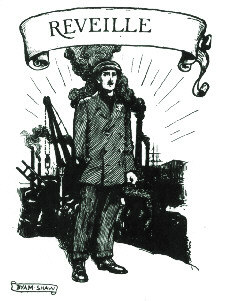 First Issue |
|
In every Street, on every road and village-green we meet them-crippled, half crippled, or showing little outward trace, though none the less secretly deprived of health. Those who encouraged such men
to "drift" into shiftless despair were "guilty of ingratitude, and will be the first to
show impatience and heartlessness, when, five or ten years hence, we see him
cumbering the ground, hopeless and embittered, often out of work, and always an
eyesore to a nation which will wish to forget there ever was this war. |
In what proved to be the last issue of Reveille, Galsworthy returned to these themes.
|
The State, like the humblest citizen, cannot have it both ways. If it talks-as talk it does, with the mouth of every public man who speaks on this subject-of heroes, and of doing all it can for them, then it must not cheese-pare as well, for that makes it ridiculous. Britain has climbed the high moral horse-as usual-over the great question of our disabled; she cannot stay in that saddle if she rides like a slippery lawyer." It is not difficult to understand why many officials at the Ministry grown uncomfortable with their celebrated editor. With the signing of the armistice and mounting pressure of censorship by ministry officials on him, Galsworthy resigned his duties, and the journal closed down. |
Galsworthy's words were prophetic of developments in the 1920s and 1930s.
|
Verdun |
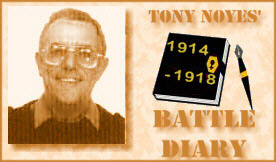 |
The Somme | |
Life in the French front line continued quietly. The German build up continued quietly.
French Intelligence continued to ignore the accumulating evidence of the build up.Click Here to See a Large
|
|||
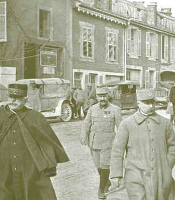 Joffre & Petain At Verdun |
The military supply situation into Verdun was bad with only a light railway still capable of operating and with one country road running adjacent with it. It was all there was at that time, so Petain appointed a Major as director for this road and he kept it running for the whole of the battle using thousands of old soldiers to keep it in some sort of usable condition. As the battle wore on, the supply links were greatly improved but in those first weeks, France could have lost the battle without it. It became known then as the Voie Sacree and is still known as such to this day.
(cont. on right)
Click Here to See a Large Battlefield Map of the Somme
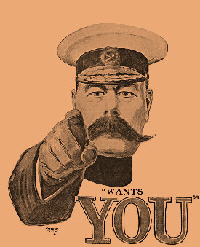
Kitchener
The river running through the British part of the battlefield to be was the Ancre with the Somme river lying to the South, but the battle will be forever known as The Somme. The start date was to be the 25th June, with the major proportion of the assaulting forces being French. At the time of the meeting the German assault on Verdun was not even suspected by the French. Haig accepted.
(Verdun cont.)
From the arrival of General Petain the front lines solidified across Pepper Hill, through Haudromont Quarries and so to Fort Douaumont. Petain instituted a system of changing his infantry units on a regular basis so that none of them suffered unduly, although their losses were grievous enough, and overall a degree of logic and management came to the battlefield. German casualties began to rise and General von Falkenhayn's grand idea began to look rather uncertain.
If only he had instructed an assault on the left bank at the same time!
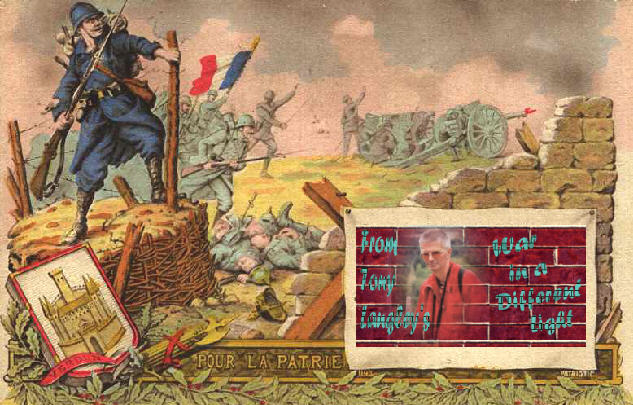
French Souvenir of Verdun
Click Here to Visit War in a Different Light |
A German Presence
At Verdun
By Christina Holstein
Since the Verdun battlefield is essentially a French shrine, elements reflecting the German sacrifice during the struggle of 1916 are often missed by visitors since they are usually away from the main tourist routes.
Here are three images of the 24th Brandenburger monument at Verdun. It stands in a former cemetery for officers of the famous 24th Brandenburg Infantry Regiment, which took Fort Douaumont on 25 February 1916. The bodies were exhumed after the war and reburied in the German cemetery at Ville-devant-Chaumont, Meuse, which is about 5 miles north of Fort Douaumont. The monument has been recently cleaned by a group of German historians who have got together with the French war graves organisation, Souvenir Francais, to preserve it and other German monuments in the area.
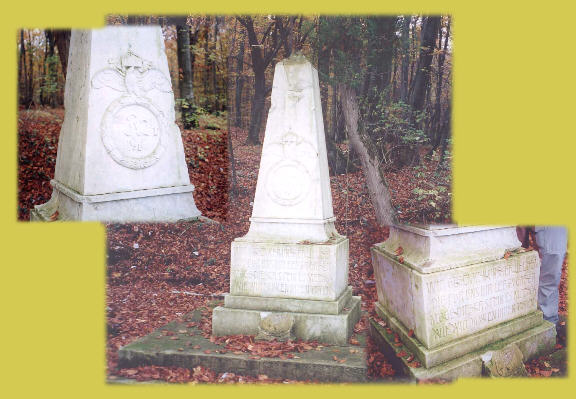
|
in the 21st Century |
- Soldier's Letter Mailed 1918 Finally Arrives
- Canadian Journalist's Question: "Was the Armenian Experience a "Genocide?" Triggers Controversy
- Woodrow Wilson's Order to Intercept US-Europe Cables
- Fresh Calls for WWI Pardons in UK
Douaumont Die Hölle von Verdun, directed by Heinz Paul, was released in August 1931. Paul uses a mixture of actual wartime stock-footage and reenactments played by some of the actual veterans of the battle. In modern parlance, it's a docu-drama. Paul focuses on Captain Haupt and his taking of the fort in February 1916 and what happened afterwards as his men are slowly whittled down by the constant struggle to retain the fort from the never ending French counterattacks. Other than Captain Haupt and Lieutenant Radtke the majority of the actors are forgettable. Haupt and Radtke aren't actors but there's an aura of verisimilitude in their portrayal of themselves. Overall, the quality of the acting is minimal and the budget is on the same level. It looks like the director had a bigger budget for explosions than for extras. The mass attacks seem rather meager. Still, there's something very powerful in this story. There's a roll-call sequence before the fort is retaken by the French that's poignant, as the remaining survivors answer the call and the dead are shown lying at their posts when their names are called. This title is currently available on VHS from International Historic Films (link). If you're planning on ordering, you need to know that the film is in German with German intertitles and does not have subtitles. Heinz Paul was an important director of German war films. In addition to Douaumont, he also directed U9 Weddigen, Ein Heldenschicksal (1927), Somme, Das Grab Der Millionen (1930), and Tannenberg (1932). Die Andere Seite starring Conrad Veidt was released in October, 1931 and was a German version of R.C. Sheriff's Journey's End. Andrew Melomet, Proprietor of Andy's Nickelodeon will answer your Great War film or video inquiry. He is also soliciting your recommendations for the WWI Filmography he is compiling for our readers. Just click HERE. |
| The following are thanked for their contributions to this issue of the Trip Wire: Bob Ford, Image of Arnold cover from EBay, Image of Mausoleum from Wikipedia, Christina Holstein,Tony Noyes, Esther MacCallum-Stewart, Andy Melomet, Len Shurtleff. Until next month, your editor, Mike Hanlon, who was solely responsible for the sins inflicted on Mr. Eliot's poem. |
Membership Information  Click on Icon |
SUBSCRIBE TO THE TRIP-WIRE (Or Send it to a friend.) (Or send us a comment on the TRIP-WIRE) CLICK HERE TO CONTACT US VIA EMAIL |
For further information on the events of 1914-1918
visit the Directory Page of |

